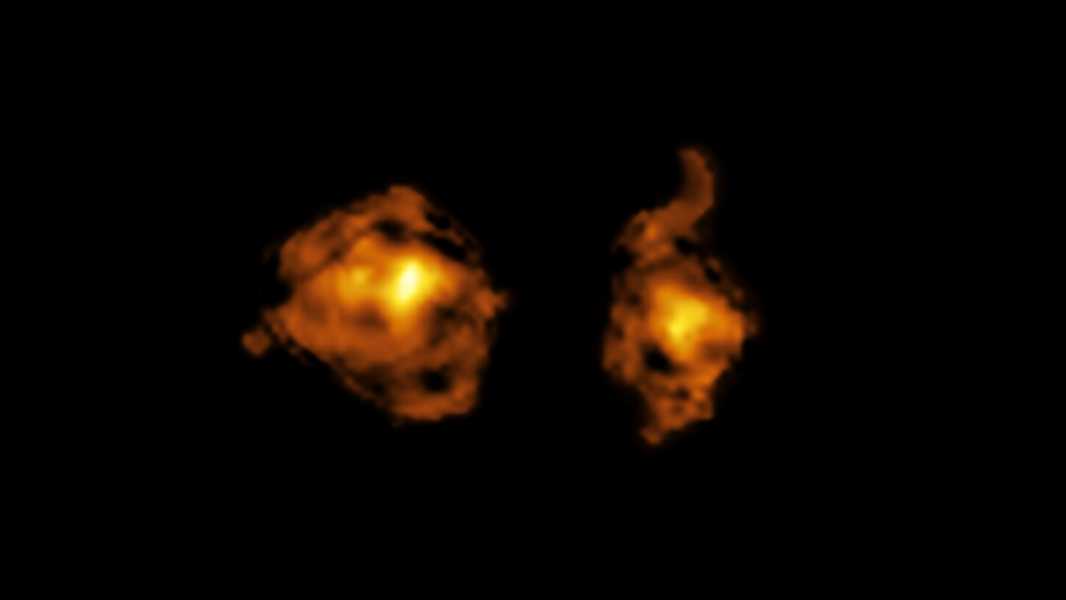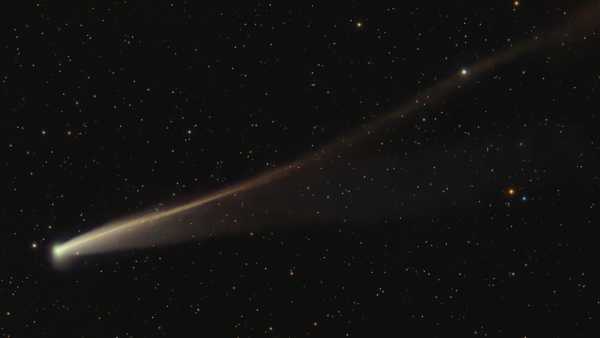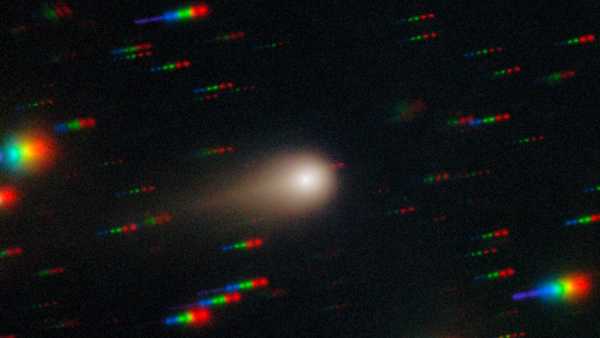
This image from the Atacama Large Millimeter/submillimeter Array shows the molecular gas content of two galaxies engaged in a cosmic collision. (Image credit: ALMA (ESO/NAOJ/NRAO)/S. Balashev & P. Noterdam et al.)
If you rise before dawn any day this month, you'll be able to see bright Venus rising in the east. Below, in the constellation Cetus, something spectacularly destructive is happening in the distant background: a “cosmic battle” between two enormous galaxies.
Here, 11 billion light-years from Earth and not far from the beginning of the universe itself, two galaxies are moving toward each other at 310 miles per second (500 kilometers per second), destined to collide before moving apart again and colliding again.
Taken using the European Southern Observatory's Very Large Telescope and the Atacama Large Millimeter/submillimeter Array Antenna in Chile and published this week in Nature, the image is unique in that one of the galaxies is a quasar, in which a supermassive black hole is gobbling up so much gas and dust that it forms a glowing disk at the center of the galaxy. Quasars are among the brightest objects in the known universe, often emitting thousands of times more light than the entire Milky Way, according to the European Space Agency.
You may like
Sourse: www.livescience.com





